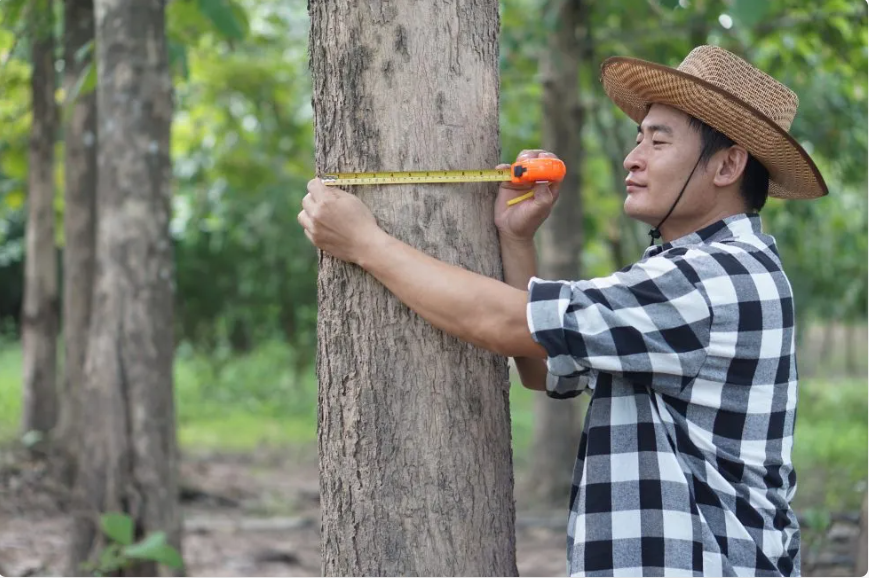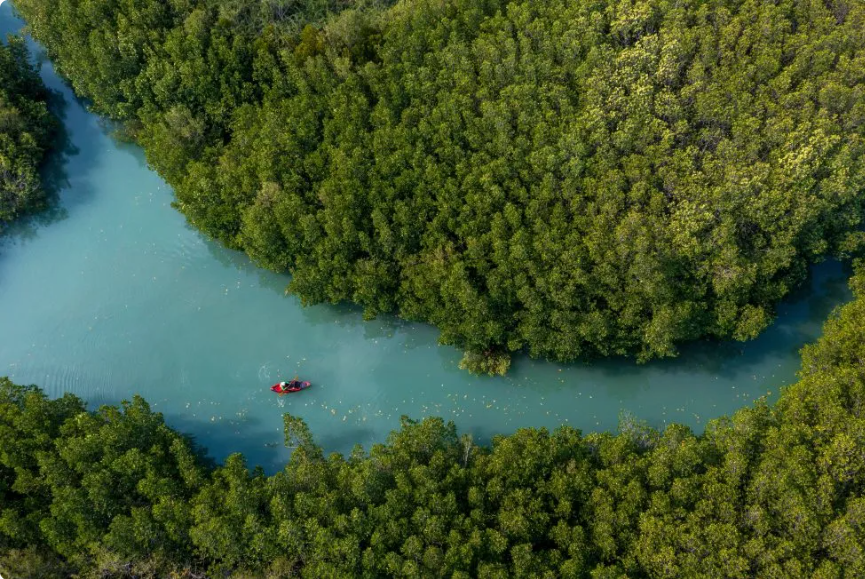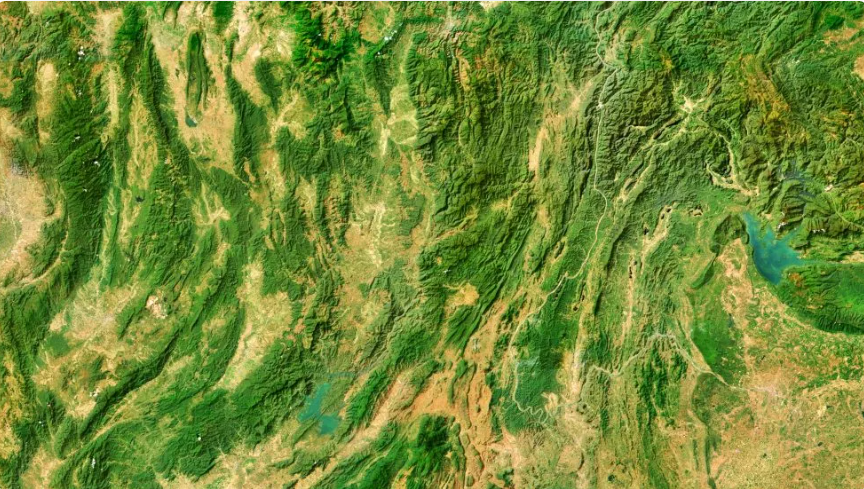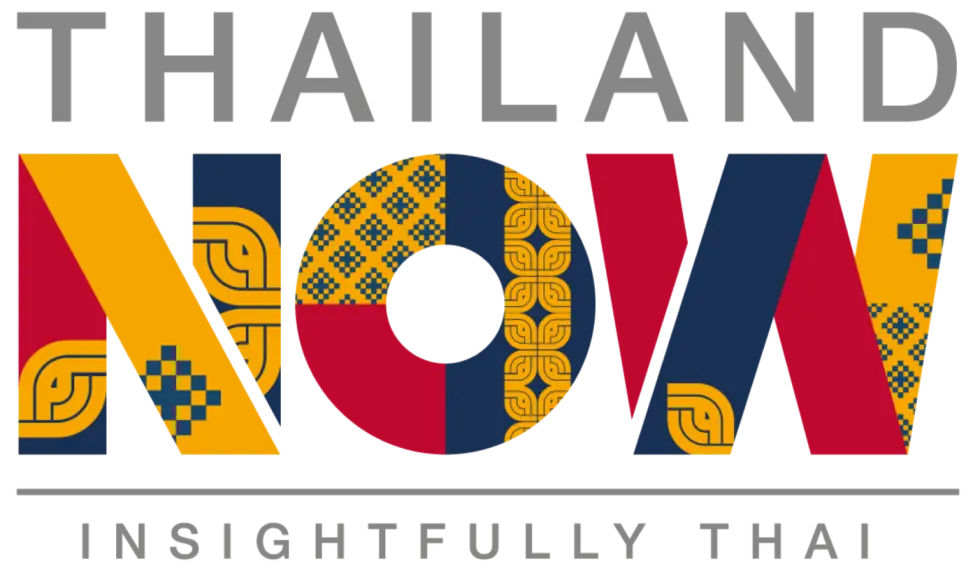The new frontier of Thailand’s carbon credits market
The new frontier of Thailand’s carbon credits market
วันที่นำเข้าข้อมูล 8 ก.ย. 2568
วันที่ปรับปรุงข้อมูล 8 ก.ย. 2568
The world is running out of time on climate change. Scientists warn that a rise of just 1.5°C in global temperatures could trigger irreversible damage to ecosystems and human societies. That looming threshold explains why countries signed onto the Paris Agreement in 2015 and why phrases like “net zero” and “carbon neutral” are now part of corporate boardroom vocabulary.
Carbon credits are one of the tools designed to get us there. They turn the abstract idea of “emissions reductions” into something measurable and tradable. For Thailand, which has pledged carbon neutrality by 2050, the carbon credit market is still small, but it’s moving quickly, powered by new regulations, tech startups, and corporate buyers under pressure to act.
From community forests in Chiang Mai to financial innovations in Bangkok, the market is evolving into a new frontier for climate action.
What exactly is a carbon credit?

At its simplest, one carbon credit equals one tonne (1,000 kg) of carbon dioxide (or equivalent greenhouse gases) reduced or removed from the atmosphere. Projects that cut emissions (planting forests, capturing methane, installing renewable energy) can be verified and awarded credits. Companies, governments, or even individuals can then buy those credits to “offset” their own emissions.
There are two main types of carbon markets:
- Mandatory markets, like the EU Emissions Trading System, where companies are legally required to hold credits for their emissions.
- Voluntary markets, where organizations buy credits without being required to. Think of Microsoft or Google offsetting their emissions, or airlines offering passengers the option to “neutralize” the impact of their flights.
Thailand sits firmly in the voluntary camp, with its own standard called the Thailand Voluntary Emission Reduction Project (T-VER). Projects that meet T-VER’s criteria can generate credits, which are then traded or retired to offset emissions. The Thailand Greenhouse Gas Management Organization (TGO) maintains the official registry here.
Thailand’s carbon credit market snapshot

Thailand’s carbon market is still in its early stages but growing fast. Between 2016 and April 2024, just over 3.25 million tonnes of carbon dioxide equivalent were traded (valued at about THB292 million or US$9.05 million), with an average price of THB89.6 per tonne. To put that in perspective, it represents less than one percent of the country’s total emissions. In other words, there’s a lot of room to grow.
Globally, the voluntary carbon market is surging. Research firm The Business Research Company estimates its value at US$1.55 billion in 2024, with projections of more than $4 billion by 2029 (a compound annual growth rate above 20 percent). Thailand’s trajectory is expected to follow that trend as both corporate and community projects scale up.
The government is also pushing to make the system easier to use. In July 2025, TGO unveiled the “TGO Showroom,” a new online marketplace for carbon credits, designed to bring more transparency and accessibility to trading. It’s a signal that Thailand wants its carbon market to be more than just a niche tool, and it wants to position itself as a regional hub.
Where Thai carbon credits come from

In Thailand, most carbon credits don’t come from high-tech factories or futuristic machines. They come from trees. Forest-based projects dominate the market because they’re relatively straightforward to measure and deliver co-benefits, like biodiversity protection and watershed health.
One of the flagship efforts is the Carbon Credit from Community Forests for Sustainability Project run by the Mae Fah Luang Foundation in partnership with the Royal Forestry Department, TGO, and several private companies. The idea is simple: communities already protecting forests can register their land under the national T-VER system, get verified for how much carbon those forests store, and then sell credits to corporations looking to offset emissions. In return, companies provide funding for wildfire prevention and community development.
But forest credits aren’t without controversy. Analysts have raised concerns about so-called “phantom carbon credits,” where projects may overstate their climate benefits, especially if the forest was already under legal protection. Verification costs are also steep: a 10-year project covering just 1,000 rai (1.6 square kilometers) can cost more than a million baht in documentation and certification. That’s a heavy burden for rural communities without outside support.
Still, these projects remain popular because they connect climate action with local livelihoods. The Mae Fah Luang Foundation reports that more than 120 communities are now enrolled, covering more than 23,000 hectares of forest.
Innovation and tech in the Thai carbon market

Alongside traditional forestry, new technology is helping to professionalize Thailand’s carbon market. CERT+, a startup under SCGC, is using satellites and artificial intelligence to track forest growth in near real-time. By turning 2D satellite images into 3D models that measure tree height and canopy width, the platform can provide more precise carbon stock estimates. That data is certified by TGO, meaning it can be used directly in credit calculations.
Other players are going beyond forests. At the 2025 Techsauce Global Summit, Japanese startup Green Carbon Inc. showcased projects across Southeast Asia — from rice paddies that reduce methane emissions to mangrove replanting and biochar production from agricultural waste. Their credits are T-VER compliant, and they’re also registered under global standards like Verra and Gold Standard, which makes them more attractive to multinational buyers.
Thailand itself is nudging projects toward higher standards with Premium T-VER, a new category designed to meet international benchmarks. That shift could help the country’s credits compete in global markets where quality and credibility are everything.
Banks are also getting in on the action. In 2024, Kasikornbank (KBank) executed Thailand’s first Carbon Credit Forward transaction, a financial instrument based on internationally certified Verra credits. In plain terms, it’s a way for buyers and sellers to lock in future credit prices, reducing the risk of volatile swings in value.
Why does this matter? For project developers, forward contracts make projects more “bankable,” because they can show guaranteed future revenue. For corporations, it provides cost certainty in planning their climate strategies. For the market overall, it signals that carbon trading is moving beyond one-off deals toward a more sophisticated ecosystem, with financial institutions helping provide stability and transparency.
Together with innovations like TGO’s new trading platform, these financial tools are laying the groundwork for a more liquid, credible carbon market in Thailand — one that could attract serious investment from both domestic and international players.
Who needs to pay attention?

Thailand’s carbon market isn’t just for policy wonks or environmental NGOs. Different groups have different stakes in how it develops:
- Corporates: For companies facing investor and consumer pressure, carbon credits are a way to offset emissions that can’t yet be cut. Buyers range from tech firms to airlines, and in Thailand, firms like Bangchak are not just purchasing credits but also developing renewable energy projects and co-founding the Carbon Markets Club to spread awareness.
- Communities: For rural villages, carbon credits can mean real money. Through projects like the Carbon Credit from Community Forests for Sustainability, communities receive funding for wildfire prevention, forest maintenance, and livelihood support. But high certification costs and unclear benefit-sharing rules (flagged in critiques of community forest carbon credit projects) remain major challenges.
- Students and Researchers: Thailand’s carbon market offers a live case study in how Southeast Asian countries are adapting global frameworks like the Paris Agreement to local contexts. It’s also a lens to study the intersection of environmental policy, rural development, and financial innovation.
- Government and Policymakers: Agencies like the TGO face the balancing act of keeping standards credible enough for global buyers while making participation accessible to small communities and project developers.
The Thai frontier of carbon markets
Thailand’s carbon market is still small, but momentum is building.
Carbon credits in Thailand have evolved from an obscure policy tool into a marketplace that touches farmers, financiers, and corporate boardrooms. The stakes are high: it’s beyond cutting emissions, but also about channeling funding to communities, creating new business models, and positioning Thailand as a regional leader in the carbon economy.
The direction is clear. Thailand is building the infrastructure, experimenting with innovative models, and aligning with global standards. The next step is scaling and making sure the credits generated are high-quality, the benefits are equitably shared, and the system is robust enough to avoid accusations of greenwashing.
Thailand Business Information Center in Taiwan
